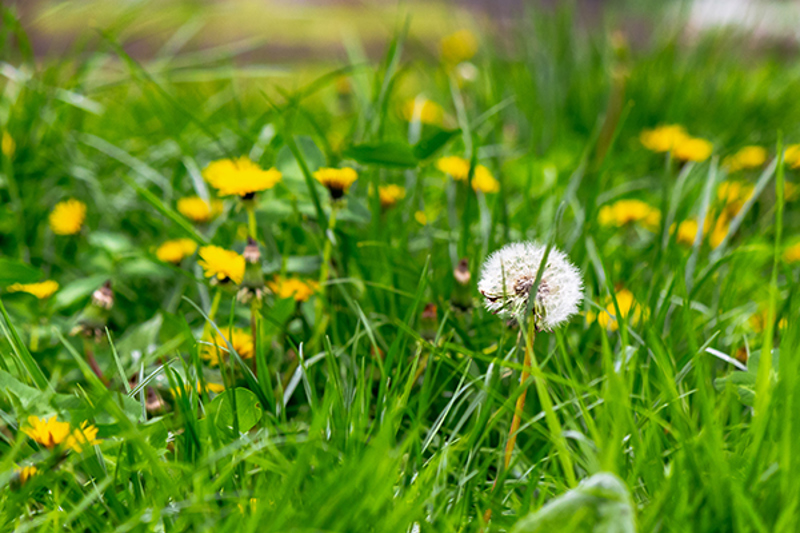Yates Account
Join now
Create a Yates account today!
Sign up to join the Yates Garden Club for monthly e-mails packed with seasonal inspiration, tips for success & exclusive promotions.
Plus if you’re a Garden Club member you can take part in the Yates Growing Community - a blog to share successes, get advice & win prizes in fun challenges along the way!

Forgot password
Enter the email address associated with your account, and we'll email you a new password.

This month, we’re focusing on two of the biggest spring challenges to a beautiful lawn: destructive grass grub and unsightly broadleaf weeds.
Get Rid of Grass Grubs
Grass Grubs are the larval stage of the native Bronze (or Brown) Beetle which chew at the roots of plants and lawns. Larvae are most active during mid spring to mid-summer, and can cause severe damage to lawns, gardens and potted plants. Grass grubs are among the most destructive pasture pests in NZ and are a real challenge for the agricultural sector.
Adult beetles are attracted to light, it’s quite common during October / November to see bronze beetles buzzing around street lighting. If your outdoor lighting is close to your lawn area, consider turning it off during spring, or avoid using it for extended periods so it’s not an inviting landing strip.
The classic symptom of grass grub infestation is brown dead patches developing in the lawn, which can be easily lifted up or rolled like a carpet. If plants in your garden or pots are wilting despite being well watered, that’s also a sign grubs may be at work.
To help ID them, grass grub larvae have a cream body with a light brown head and they vary in size from 6mm to 20 mm as they grow. The tail end may look darker brown, due to the soil the grub has ingested during feeding. Grass grubs are usually present feeding on plant roots in large numbers. They have a distinctive ‘curl up’ behaviour when dug up or disturbed.
The good news? We have a really effective solution. Yates® Lawn Grub and Porina Kill + Protect delivers excellent preventative control against grass grub larvae. It has a long residual performance and provides up to 6 months protection.
Keeping your lawn strong and healthy really helps it to resist pest pressure. Give your lawn a weekly deep watering, mowing at a higher level and feeding it regularly with Yates Dynamic Lifter Organic Lawn Food.

Whacking Weeds
While your lawn was asleep during winter, many weeds hit top gear and have been busy, stealthily taking over. It's time to scuttle their lawn-domination plans and counterattack!
Broadleaf weeds can sneak in under the radar. They start off small and inconspicuous, hiding in amongst grass blades. Weeds that established themselves in the lawn during winter will love spring's mild conditions and be putting on lots of fresh new growth, planning to flower and set seed. It's important that weeds are controlled before they can produce seeds, as this will create future years of weed anguish.
Common lawn weeds during early spring include Onehunga weed, clover, thistles and dandelions. In the case of party-pooper Onehunga weed, the prickly seeds are particularly troublesome for bare feet. All these weeds have different leaf shapes and colour to grass, so they really stand out and ruin the look of a lawn. If they aren't controlled, they can outcompete grass and become really dominant.
You’ve probably already seen signs of lawn weeds, but it pays to be proactive in early spring even if they aren’t obvious. Luckily, it’s pretty simple to control broadleaf weeds with a selective herbicide. This is the type of weedkiller that removes weedy invaders without harming the lawn grass.
Yates Turfix Lawn Weed Spray Concentrate is our go-to choice to cull these weeds, and it really suits common NZ lawn types like Fescue, Browntop, and Ryegrass.
















Share
Share this article on social media